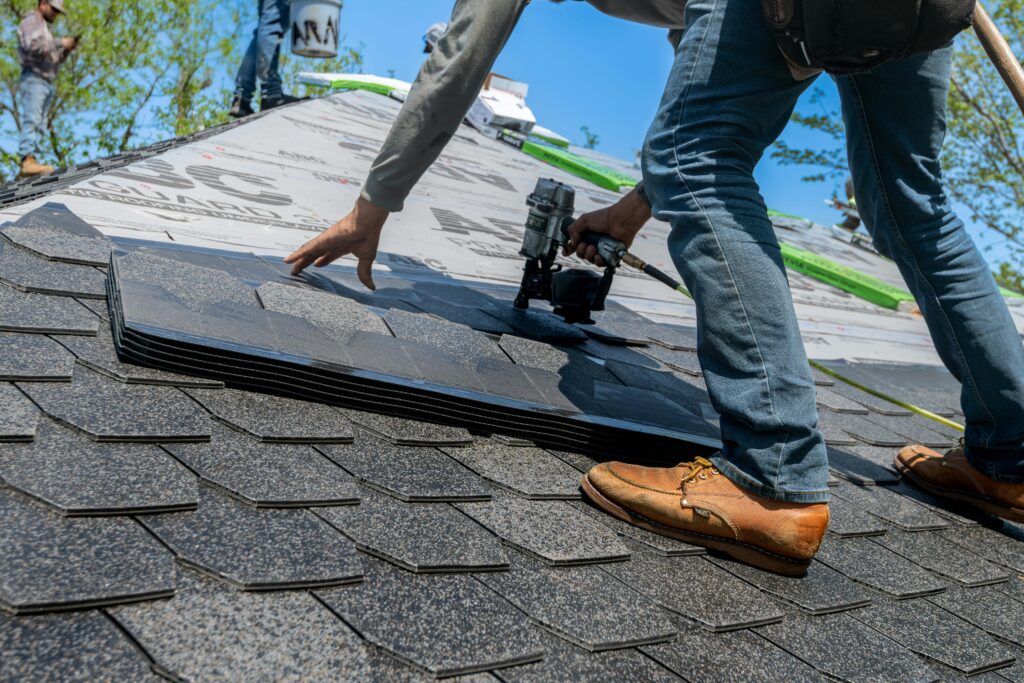Having a leaky roof in Tampa is a bigger deal than you’d think. Water intrusion can spread quickly, damaging insulation, ceilings, walls, and even the structural integrity of your home. And in our humid Florida climate, lingering moisture can invite mold growth in as little as 24–48 hours.
If you’ve spotted water stains on your ceiling, heard dripping during a storm, or noticed damp spots in your attic, the clock is ticking. Here’s what you should do when you have a leaking roof—and why calling a professional roofer is the surest way to get it fixed right.
Step 1: Don’t Panic. Stay Safe and Contain the Leak
When water starts coming in, the priority is safety—both yours and your home’s.
- Move furniture and valuables out of the affected area to prevent damage.
- Place a bucket or container under the leak to catch water and minimize floor damage.
- Relieve water buildup in ceilings by carefully puncturing small holes in any bulging drywall (only if it’s safe to do so) so water can drain into a container.
What you should not do is climb onto the roof during or after a storm—wet shingles, slick tiles, and hidden structural damage make for dangerous conditions.
Step 2: Identify Obvious Signs of Damage
If it’s safe, step outside and visually inspect your roof from the ground. Look for:
- Missing or curled shingles
- Cracked or displaced tiles
- Bent or missing flashing
- Debris lodged on the roof
These signs can give roofing professionals clues about the source of the leak.
Step 3: Avoid Quick DIY Patches
It can be tempting to grab a ladder and try to fix the leak yourself with tar, sealant, or leftover shingles. But without proper safety equipment, roofing experience, and an understanding of Tampa’s building codes, DIY repairs can:
- Fail under the next heavy rain or wind
- Hide deeper damage that continues to spread
- Void manufacturer warranties on roofing materials
- Put you at risk of injury
Professional roofers don’t just patch the visible issue—they identify and repair the root cause so the problem doesn’t return.
Step 4: Call a Reputable Roofing Contractor
A licensed, insured roofing contractor will:
- Pinpoint the source of the leak (often not where the water shows up inside)
- Check for hidden water damage in the underlayment, decking, and attic
- Use materials that match or exceed your current roofing system’s specifications
- Perform repairs that meet or exceed Florida hurricane-resistant building codes
This ensures your home is protected—not just from the current leak, but from future storms and downpours.
Step 5: Understand the Common Causes of Roof Leaks in Tampa
Knowing the “why” behind leaks can help you discuss repair options with your contractor. In our area, common causes include:
Worn or Damaged Shingles
Florida’s sun, wind, and rain can cause asphalt shingles to curl, crack, or lose granules over time.
Broken or Slipped Tiles
Clay and concrete tiles are durable but can crack or shift during storms or from impact.
Failing Flashing
Metal flashing around chimneys, vents, and skylights can loosen or corrode, allowing water to seep in.
Clogged Gutters
When gutters overflow, water can back up under shingles or tiles.
Poor Past Repairs
Quick fixes or low-quality workmanship from previous repairs can lead to recurring leaks.
Step 6: Get a Thorough Roof Inspection
An inspection will reveal not only the visible leak but any underlying issues—like damaged decking, mold, or improper ventilation—that need attention.
In Tampa, inspections also ensure that repairs are compliant with local codes designed to protect homes from hurricane-force winds.
Step 7: Approve a Detailed Repair Plan
Your roofer should provide a written proposal that includes:
- The exact location and cause of the leak
- Recommended repair method and materials
- Estimated timeline
- Total cost and payment terms
- Warranty information
Transparency here helps you feel confident in the repairs and ensures no surprises down the road.
Step 8: Schedule Repairs Promptly
Even small roof leaks can worsen quickly—especially in Tampa’s rainy season. Once you’ve approved the repair plan, schedule the work as soon as possible to prevent additional damage.
Step 9: Prevent Future Leaks
After repairs are complete, preventive measures can help you avoid future headaches:
- Schedule annual roof inspections
- Keep gutters clear
- Trim overhanging branches
- Address minor damage promptly before it turns into a leak
Ready to Stop the Leak for Good?
Don’t let a small drip turn into a big, costly problem.

